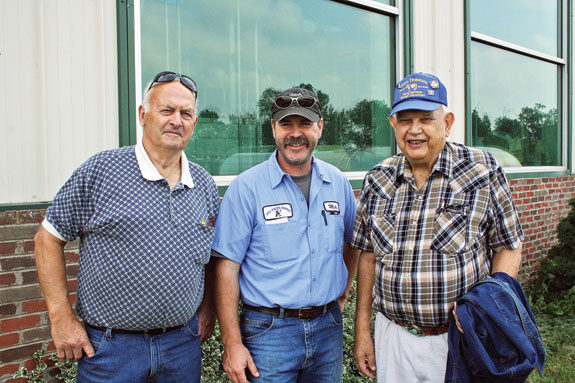When winter strikes in the northern climate, barn doors are pulled shut and curtain sidewalls are rolled up. The chill in the air keeps most people from thinking of cooling strategies in place on the dairy, such as misting lines and fans. Yet, one dairy producer in Michigan has found value in running fans year-round.
Mike Rasmussen owns Hill Haven Farms in Edmore, Michigan. The 1,000-cow dairy took on its current size in 2008, when Rasmussen added a six-row freestall barn on to the existing freestall barn, which was originally built in 1990.
He also built a second four-row freestall barn behind the first. High-producing cows are kept in the newer barn, with close-up and dry cows taking up residence in the older building.
When considering ventilation for the new buildings, he started pricing out various options. He looked at the cost of wiring and energy usage, among other things.
Rasmussen took notice of the high-volume, low-speed (HVLS) fans and recognized they would amount to less motors running on less horsepower with fewer amps being drawn. His big question was, “Does it work?”
 “We had seen the big fans and were impressed by the amount of air they pushed, but we were not sure they would work in this setting,” he says.
“We had seen the big fans and were impressed by the amount of air they pushed, but we were not sure they would work in this setting,” he says.
Eventually he settled on purchasing the HVLS fans in a 20-foot diameter for the barns.
Contrary to some operations that have fans running down the center feed alley, Rasmussen decided to place these fans above the freestalls on each side of the barns. This was done to direct airflow to the cows and avoid drying out the feed.
He also purchased two 12-foot HVLS fans for the parlor and a 24-foot HVLS fan for the holding area.
Looking back at the decision, Rasmussen says that on two or three really hot days he feels another option may perform better, but these fans have prevailed on every other hot day.
One benefit he really likes is how quiet and tranquil the fans make the barns. “It was a lot more peaceful. Quiet people make quiet cows. That’s what I always strive for,” Rasmussen says.
“I want high production to come from the absence of stress on the cows,” he adds.

What most surprised Rasmussen were the benefits he’s found using the fans in the winter. The curtain-sidewall barns are not insulated. During the first winter, he noticed moisture building up inside the barn.
During a phone call with Don Themm of Don Themm Enterprises, from whom he purchased the fans, it was suggested Rasmussen try turning the fans on even though the temperature was cool enough to not require them.
“I thought Don was nuts when he told me to turn them on in winter,” Rasmussen says. Now the fans run at level three throughout the winter.
He says there are nine power levels on the fans. In contrast, the fans run at nine in the summer, except on the rare cool days that occur.
The fans bring air down to the floor of the barn. In the winter, they pull down the hot air and disperse a more even temperature throughout the barn. In doing so, it prevents that moisture build-up at the end of the barn that previously didn’t get much of a breeze.
When the barns were checked for temperature uniformity, they found the fans were doing just that. More importantly, though, Rasmussen says, “it just seems nicer in here.”
He also says keeping it warmer at the cow level can result in higher production. When it is colder than the cows’ lower critical temperature, they use more of the energy consumed just for maintenance. The impact of more warm air on those borderline days results in more energy cows can put towards milk production.
In addition, it helps keep the barn cleaner. The better distribution of warm air also results in a little less freezing of the manure, which better facilitates its removal with the use of a manure vacuum.
While it seems a little unusual to turn a fan on when the temperature is below freezing, it certainly has become standard procedure for Rasmussen. PD
PHOTOS:
TOP RIGHT: Michigan dairy producer Mike Rasmussen (center) says he is pleased with his decision to install HVLS fans in his new barn. With help from Sam Straub (left) and Don Themm (right), both with Don Themm Enterprises, Rasmussen is now getting the maximum benefit using the fans all year long.
MIDDLE RIGHT AND BOTTOM RIGHT: When the cool winter air is blowing outside, these high volume low speed fans work to blow warm air down to cow level. Photos by Karen Lee.

Karen Lee
Editor
karen@progressivedairy.com





